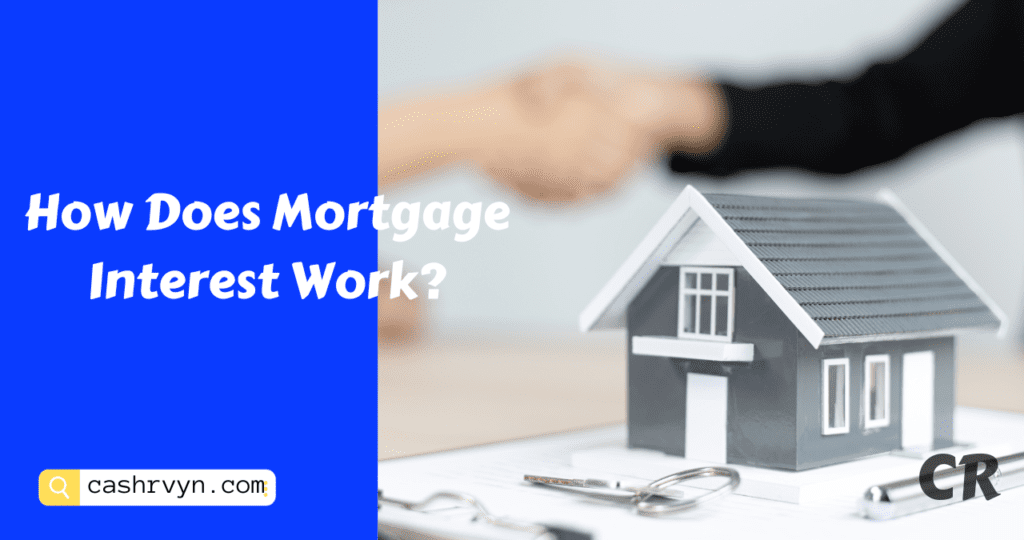When you purchase a home using a mortgage, you must also pay back the main, which is the amount you borrowed. In addition, you are responsible for paying mortgage interest on any remaining balance of the loan. The expense of borrowing money is this. The kind, size, and length of your loan, as well as the amount of your down payment, all affect how much interest you will pay on your mortgage.

Usually, a bank or mortgage provider will finance 80% or more of the cost of the house, and you agree to pay it back – with interest — over a certain time frame. Understanding how mortgages function and which kind would be ideal for you is useful when you compare financiers, mortgage rates, and loan possibilities.
Mortgage Interest vs. Principal
Each mortgage payment you make consists of two parts. The principle refers to the sum that you borrowed but have not yet paid back. Interest is the cost of borrowing such money. The amount utilized to compute mortgage interest is based on the amount of principal that is still outstanding.
The majority of mortgages require monthly payments of the principal (the amount you borrowed) and interest. Your lender will develop a payment schedule that divides each monthly payment into principle and interest using an amortization calculation.1
When you first begin making mortgage payments, you’ll probably spend more money each month on interest than on the loan’s principal. However, the amount of principal that remains unpaid lowers as you make payments. As a result, as your monthly interest payment decreases, a growing portion of your mortgage payment can be applied to paying down principal.
The loan will be completely repaid if payments are made in accordance with the amortization schedule by the end of the predetermined term, which is typically 30 years. If the mortgage has a fixed interest rate, each payment will be the same amount of money. If the mortgage has an adjustable rate, the payment will fluctuate as the loan’s interest rate does.
The amount you’ll pay each month also depends on the term, or length, of the loan. The monthly payments will usually be lower the longer the duration. The trade-off is that because you’ll be paying interest for a longer time period, the longer it takes you to pay off your mortgage, the greater the entire cost of purchasing your property will be.
Fixed-Rate Interest vs. Adjustable-Rate Interest
Your interest rate is determined by a number of variables that represent the riskiness of the lender’s decision to lend you money. For instance, you can be given a higher interest rate if you have a lot of other debt, an unpredictable income, or a bad credit score. This implies that the cost of obtaining financing to purchase a home is higher.
You are more likely to be given a reduced interest rate if you have a good credit score, few or no previous loans, and steady income. Your mortgage will therefore cost less overall as a result.
The sort of mortgage you obtain will also affect your mortgage interest rate. Lenders and banks generally provide two fundamental loan types:
When you obtain a mortgage, the interest rate is fixed and does not vary.
Adjustable rate: Also known as a variable-rate or hybrid loan, this type of loan has an initial interest rate that may fluctuate under certain circumstances.2
The two types function as follows.
Fixed-Rate Mortgages
The interest rate on this kind of mortgage is fixed for the duration of the loan and does not fluctuate. For the duration of the loan, the monthly payment also stays the same.2 Loans frequently have a 30-year repayment term, while 10-, 15-, or 20-year loans are also routinely available. While shorter loans entail higher monthly payments, the total cost of interest is lower.
Example: At a 4.5% annual interest rate, the monthly payment on a $200,000 fixed-rate loan for 30 years (360 installments) will be roughly $1,013. (Homeowners insurance, private mortgage insurance, and real estate taxes are extra and not included in this amount.) 4.5% divided by 12 equals a monthly interest rate of 0.375%, or the yearly interest rate of 4.5%. As a result, the interest rate on your outstanding loan balance will be 0.375% each month.
The bank will deduct $263 from the principal and $750 from the loan’s interest after you make your first payment of $1,013. The second monthly payment will accumulate a bit less interest because the principal is a little smaller, which means that a little more principal will be paid off. Nearly the entire monthly payment will be applied to the principal by the 359th installment.
Adjustable-Rate Mortgages (ARMs)
An adjustable-rate mortgage’s interest rate is not indefinitely fixed, therefore the monthly payment will fluctuate throughout the loan’s term.3 The majority of ARMs feature restrictions or ceilings on the amount, frequency, and height of interest rate fluctuations. The lender recalculates your monthly payment when the rate changes, which keeps it constant until the next rate adjustment happens.
The lender will apply a portion of your monthly payment to principal and an additional piece to interest, just like with a fixed-rate mortgage.
Teaser rates, which are reduced interest rates offered by lenders for the first few years of an ARM, can fluctuate after that—as frequently as once a year. An ARM’s initial interest rate is typically much lower than a fixed-rate mortgage’s. For this reason, ARMs may be appealing if you only intend to live in your home for a short period of time.
If you’re thinking about getting an ARM, find out how the interest rate is set; many are linked to an index, such the rate on one-year US Treasury notes, plus an extra margin or percentage. Also inquire about the frequency of interest rate adjustments. For instance, an ARM with a five-to-one ratio has a fixed rate for five years. After that, for the remainder of the loan term, the interest rate will fluctuate annually.
Using the aforementioned example, a $200,000 five-to-one-year adjustable-rate mortgage with a 30-year term (360 monthly payments) may begin with an annual interest rate of 4% for the first five years, after which the rate may change by as much as 0.25% annually. The monthly payment for months 1 through 60 would be $955. If it then increases by 0.25 percent, the payments for months 61 through 72 and 73 through 84 would each be $980 and $1,005, respectively. Taxes and insurance, once more, are not factored into these sums.
Interest-Only Mortgages
An interest-only mortgage is a considerably less common third choice. This is typically only available to rich or buyers with erratic incomes.
The option to pay solely interest for the first few years of this sort of loan, as the name suggests, results in lower monthly payments.4 If you believe you will only have the house for a little period of time and want to sell it before the higher monthly payments start, it can be a wise decision. However, since you won’t own any more of the house during the period you are only making interest payments, you won’t be able to increase your equity in it. You can owe more money on your house than it is worth if its value decreases.
Jumbo Mortgage Loans
A jumbo mortgage often covers sums that are greater than the conforming loan maximum. For the majority of the U.S., this cap will rise to $726,200 in 2023, a $79,000 increase over the previous cap of $647,200 in 2022. For high-cost areas, the 2023 maximum conforming loan limit is $1,089,300. This is more than the $970,800 cap set for 2022 by 150 percent, or $726,200.56
Jumbo loans come in fixed and adjustable options. They often have slightly higher interest rates than smaller loans of the same type.
There are also interest-only jumbo loans available, but these are often reserved for the very rich. They have an ARM-like structure, and the interest-only period can run up to 10 years. After then, the interest rate is revised yearly, and payments are applied to the principal. At that point, payments may dramatically increase.
The Bottom Line
With a mortgage, you are assessed interest based on the portion of the principal that you haven’t yet paid back to the lender. The expense of obtaining a mortgage loan is this interest. Pay interest to your lender on the portion of the debt that you haven’t yet returned.
There are two main categories of mortgages: fixed-rate mortgages, where the interest rate is fixed, and adjustable-rate mortgages, where the interest rate fluctuates over time. As time passes, the amount of interest you must pay each month lowers, and a larger portion of your mortgage payment is applied to principal repayment. Your own financial situation, along with interest rates established by the Federal Reserve, will determine the interest rate you receive.







